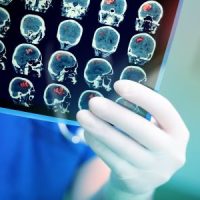
When you learn that someone suffers a stroke every 40 seconds in the US, it is easy to understand why the American Heart Association (AHA) established National Stroke Awareness Month back in May 1989. More than three decades later, the event going on throughout May 2021 will continue to focus on informing the public and reducing the impacts of stroke. There have been substantial improvements in the ability to diagnose and treat stroke, and the AHA encourages all to share their stories of recovery and inspiration.
This year’s theme, #RelentlessTogether, is a reminder that those who have suffered or are at risk of stroke, along with stroke care teams, are important communities. Because you play a critical role as a patient in supporting your own health, you should understand what to expect with stroke diagnosis and treatment.
What Proper Stroke Care Looks Like
There are two primary types of strokes recognized by the medical community, ischemic and hemorrhagic – comprising 87 and 10 percent of all strokes, respectively. The AHA reports that ischemic stroke is the fifth leading cause of death in the US and the leading cause of disability. Generally, proper stroke care is a product of two factors:
- Prevention: Studies have revealed a significant number of strokes treated in emergency rooms are preventable, which highlights the importance of recognizing risk factors. Physicians must identify, monitor, and/or treat such risk factors, but patients must also do their part to make responsible lifestyle changes. High blood pressure, cholesterol levels, and cardiac conditions present the highest threat level.
- Treatment: Time is of the essence with stroke, since the “gold standard” treatment is most effective when administered within the first several hours after an ischemic stroke. Health care providers inject a recombinant tissue plasminogen activator (tPA) intravenously to break up clots in the brain that prevent the flow of blood and oxygen in the brain. Quick treatment with tPA improves patient outcomes related to the current adverse event, but it may also alleviate complications.
Complications from Stroke Misdiagnosis
The brain is the body’s central command, so when a stroke disrupts normal functioning and messaging, the ramifications can affect many functions. Errors in diagnosis can lead to weakness, intellectual and cognitive disorders, physical disabilities, and many other complications. Some common issues include:
- Challenges with speech and language
- Problems swallowing
- Memory loss and difficulties with recall
- Emotional issues, such as depression, mood swings, and angry outbursts
- Vision and perception problems
- Sensory problems
- Personality disorders, cognitive issues, and challenges with communication
Trust Our Florida Stroke Misdiagnosis and Malpractice Attorneys to Advise You
This overview sheds some light on proper stroke diagnosis and treatment, but your health could suffer considerably in the presence of health care errors. As such, it is important to speak to one of our Miami medical malpractice lawyers at Freidin Brown, P.A. if you have concerns. To learn more about our legal services, please contact our offices in Miami or Fort Myers, FL to schedule a free consultation. After reviewing your circumstances, we can advise you on legal options.
Resource:
heart.org/en/professional/quality-improvement/stroke-month-2021



